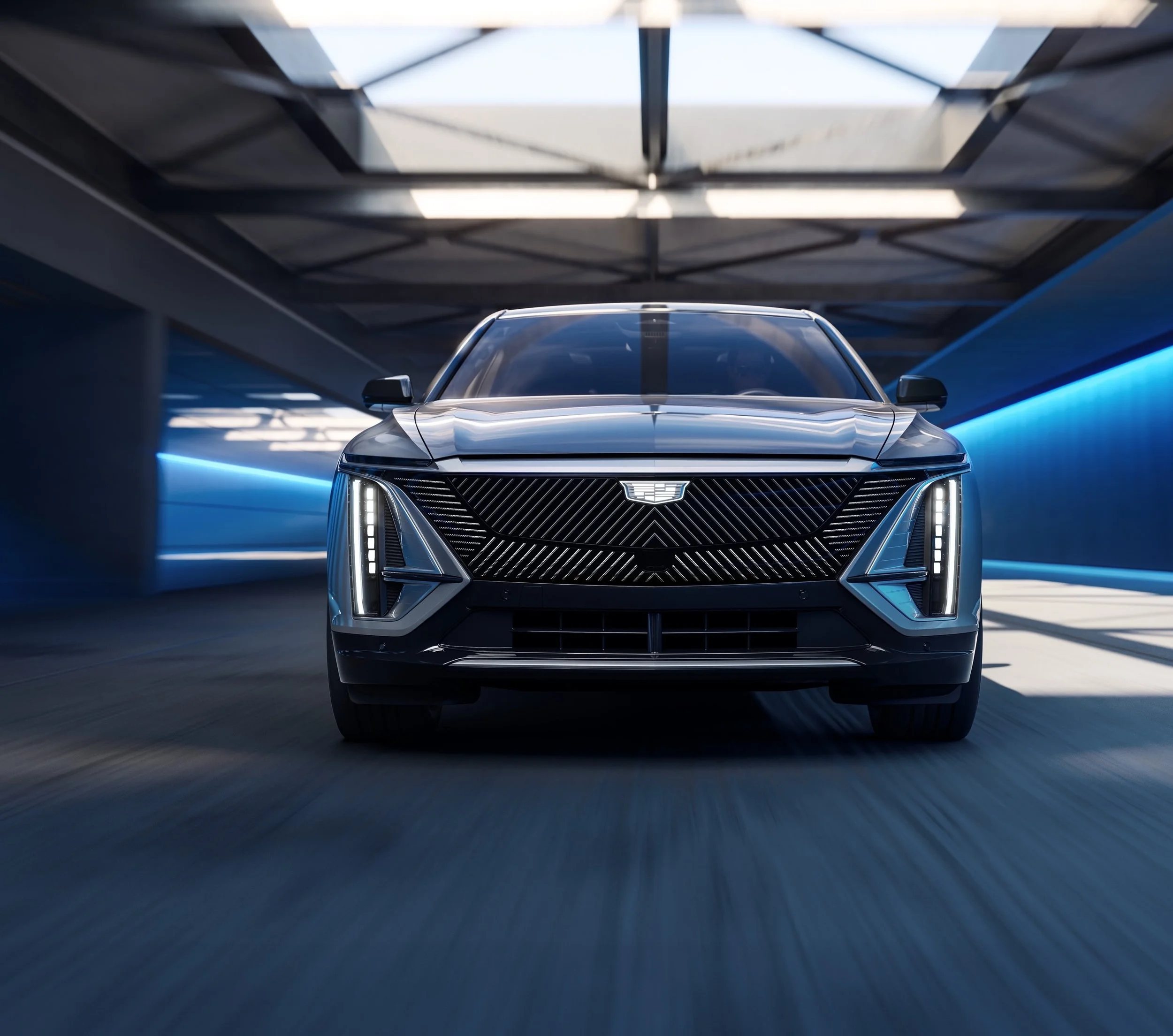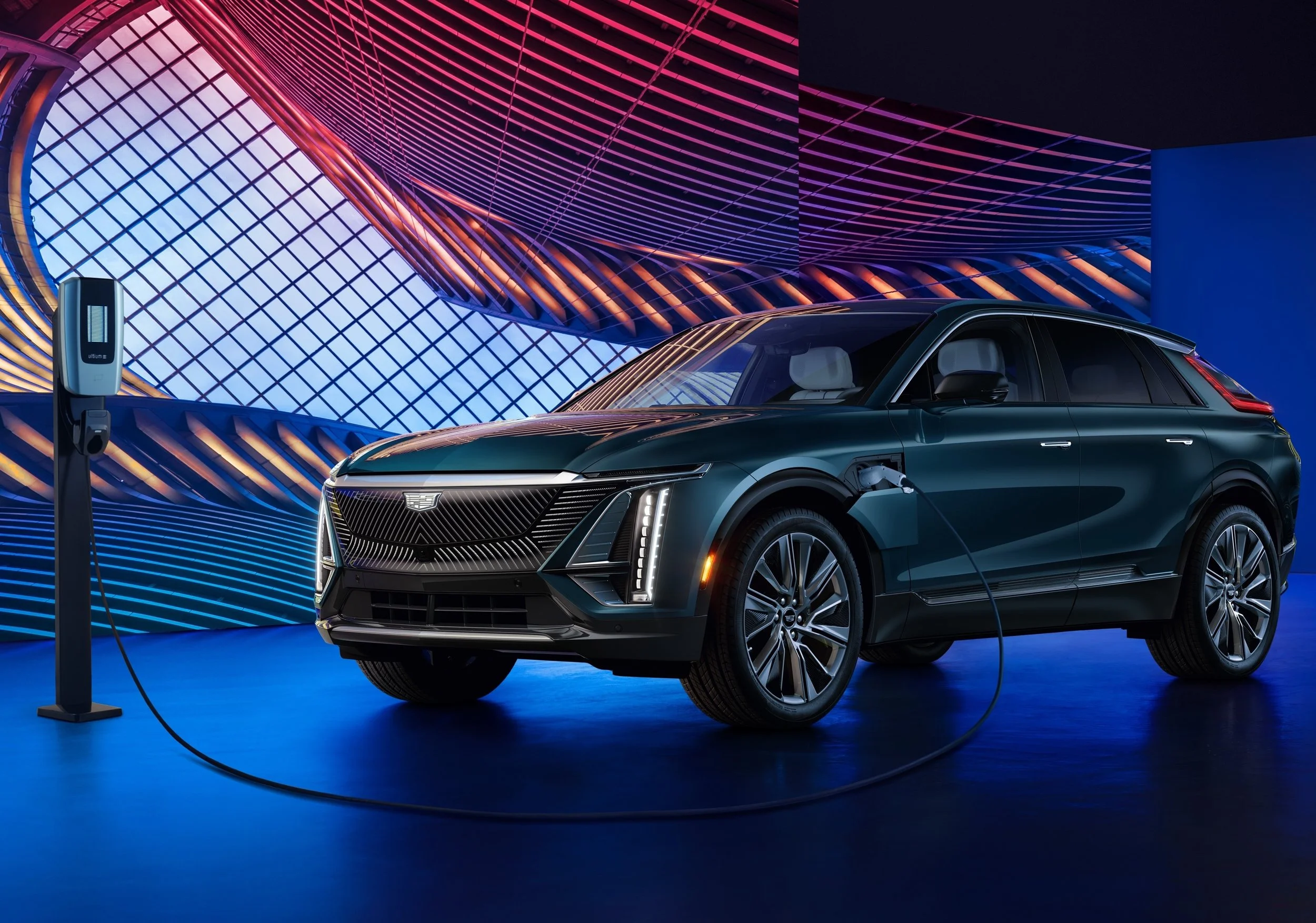Upbeat note for Lyriq despite EV uptake plunge
/Premium electric sales are well down, but Cadillac sure it’s Q4-arriving flagship can make its mark.
POTENTIAL of Cadillac’s first electric here possibly only achieving just a handful of sales in its first year has not taken the shine off launch planning.
America’s most famous luxury brand – owned by US car giant General Motors – is on track to land here between October and December as a premium electric sector contender.
Electric sales are in free fall, the whole market registering less than 30 percent of last year’s total to date.
Worse, the big gun premium sector in which America’s famous luxury marque is heading appears hardest hit.
Some motor industry involvers have said the market right now is almost as tough as it was in 2009, when the most recent credible attempt to bring Cadillac back fell through after the onset of the Global Financial Crisis.
Knowing this has not diminished eagerness to kick off with the Lyriq large sports utility and follow it up with at least two battery models by end of 2025.
In a media briefing yesterday, primarily to lay out more technical details about Lyriq - provided out of Detroit by Marcy White, global vehicle performance manager for Cadillac’s EV division - the make’s regional boss recognised the parlous state of the NZ EV scene, but spoke optimistically.
Jess Bala (above), GM’s managing director in Australia and New Zealand, acknowledged the sector is in a rut.
However, she says it is nonetheless still the right time to return a marque that was last a NZ-new choice 50 years ago.
“We're still very confident,” she said when questioned about what Cadillac could achieve when cited rival models have been returning single to low double figure sales since January 1.
“It's more around being able to set ourselves apart through the vehicle itself and then the customer experience.
“Being a luxury brand, we are not going after those mainstream volumes.
“… we’re really targeting those customers that want a premium luxury entry. And therefore because of that, we still think it's the right time.
“Obviously every other brand we're watching what's going on globally from an EV market segment standpoint, and then we'll adapt accordingly.”
Lyriq’s NZ pricing and full specification has yet to be revealed.
However, Bala shared some months ago that the five-metre long machine is set to provision in purely its own finest twin-motor, all-wheel-drive form with nearly every available option included as standard.
In US market form that variant has a 373kW powertrain and is capable of 494 kilometres’ range, with its Ultium battery accepting up to 190kWh during recharging, achieving 124kms’ charge in 10 minutes.
Bala has previously cited the Audi Q8 e-tron, BMW iX and Mercedes-Benz EQE sports utilities as being the most relevant competitors, but only in their flagship editions.
These respectively go for $181,900, $238,900 and $207,300.
Those model lines have been doing it tough, with NZTA data showing the Audi has claimed 15 registrations year to date, the Mercedes 27 and the iX 16.
Another car White says was used as a barometer, the up-to-$126,600 Lexus RZ350e, has notched eight registrations nationally.
Would Cadillac be happy if Lyriq ran to similar pace; would such low volumes sustain a business kicking off with a bespoke national outlet in Auckland?
Bala says yes.
“I mean obviously we're not going to share what our volume forecasts are, but yes …”
One strength is that Cadillac plans a direct to consumer model sale plan.
“So we've got a set up that allows us to handle whatever the market may throw at us and that will allow us to adapt to what customers need at any point in time as well.”
During yesterday’s call, White confirmed that Lyriq’s development schedule included time at the Southern Hemisphere Proving Ground near Wanaka, to sort its chassis control system.
Though Australia is popular with some makes as a good environment for extreme hot weather testing, but in Lyriq’s case this was conducted in North America.
Also, while enforcing that Cadillac had dedicating to sorting dynamic aspects - particularly suspension and steering feel - for different markets, the car as we are to see won’t have a bespoke Australasian handling tune. It instead picks up settings designed for Europe.
As with sister brands Chevrolet and GMC, distribution of Cadillac is due to be managed under the General Motors Speciality Vehicles banner, but it won't be sold in GMSV dealers.
Bala says it’s obvious Cadillac cannot sustain presence with just one car.
So even now it is starting to plan the suitability of others, which will also be manufactured in right-hand drive from the factory in the United States.
Top of the list of appearing to be other brand-new SUVs, the mid-sized Optiq and a full-sized seven-seater, Vistiq. It also has the Celestiq sedan and Escalade IQ full-size SUV.
All are electrics: Petrol still fuels Cadillac - its biggest imprint current car remains the V8 Escalade - but product from that side of the family isn’t planned at the moment and, in the case of the biggest fuel hog, localised ex-factory right hand drive conversion as per the Chevrolet Silverado would be required.
More about the next arrivals will be announced in the second quarter of next year, but whatever is given the green light then will be here by end of 2025, she asserted.
By that time, too, it might be clear if Cadillac will start to extends its presence beyond our largest city. There’s talk of potential for pop-up presences.
White (above) assures Lyriq is far removed from a stereotypical ‘Yank Tank’.
While a great deal of effort has gone into refinement, her team of 25 engineers have also worked to make it a driver’s machine.
“My background is vehicle dynamics,” she said.
“I am passionate about that and there's been so many things that have been built into the architecture of Lyriq that enable our ride and handling engineers to get that isolated precision out of it that really does make it fun to drive.
“All of our suspension components are set up to enable that. We can get that nice isolation when you're driving and on road imperfections, anything that you can throw at it (but) as soon as you turn the wheel, the precision is there, which is important.
“So it handles the road very well.”
As per EV convention, the battery and its surrounding structure enable huge stiffness and a low centre of gravity.
On her last visit to NZ, nine years ago, she drove the Crown Range road - she wished now that this experience had been in the Lyriq because “it would've eaten the roads alive. It would've been awesome.”
Bala says it’s obvious some effort will have to put into educating customers about Cadillac being very different to the brand they might imagine it to be - a maker of wafting, soggy cars. A big plus is that it has a strong recognition value.
“The market here hasn't had a lot of exposure to Cadillac … but the brand is very well known … and we did some research last year that definitely shows that there are strong familiarity levels and awareness levels.
“We still have a job to do and we'll absolutely do that, but at least the brand is definitely recognised.
“When you see the car in person there are a lot of amazing design cues, some that are modern, that are in the new face of Cadillac and the new DNA, but a lot of the heritage as well.”





















